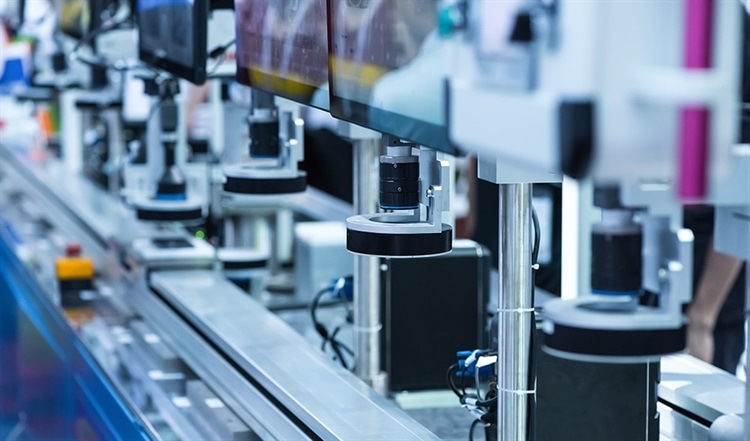Machine vision technology enables continuous and stable inspections, but you may be worried about which manufacturer’s system should be used. Machine vision greatly contributes to the introduction of FA in factories. However, as a deployer who can’t fail on a tight budget, you want to be careful about making mistakes.
What is machine vision? About the mechanism and the industry in which it is introduced
First of all, let’s reconfirm “what kind of system is machine vision”.
Make an image of “what kind of output you want to make” and “which line you want to introduce” in advance, and let’s roughly solidify the creation of the introduction plan and schedule adjustment.
What is machine vision? “Machine eyes” that replace the human eye
Machine vision is a technology that processes the images and images captured by the camera on the system and causes the device to operate based on the processing results.
Cameras, software, hardware, etc. used on the system are all treated as a machine vision system, not a specific device.
The following is an example of the general flow of a machine vision system.
- Capture images and videos taken with a camera
- The captured images and videos are processed mechanically, and the output method is determined based on the results.
- Output (move other machines, send alerts, etc.)
Machine vision systems are used as industrial systems rather than general ones. It is active in various industries such as automobiles, semiconductors, and logistics as a robot guide and automatic inspection system.
Of these, the production lines of factories are often introduced. For example, small scratches on the appearance, reading barcodes, and other parts that are difficult for the human eye to check in terms of labor and accuracy, instead, the “machine eye” checks for abnormalities.
Benefits of introducing machine vision
There are three major benefits to introducing a machine vision system:
You can check hundreds and thousands of products with one unit
For example, on a factory production line, dozens or hundreds of products flow in one minute. It is difficult to see all of them with the human eye.
With machine vision, you can check 24 hours a day, 365 days a year. Even if the speed of the conveyor is fast, it can be handled without any problem depending on the adjustment.
Can detect minute errors and features that cannot be confirmed by the human eye
Machine vision can detect scratches in millimeters and read them mechanically. It is possible to detect minute errors and features that cannot be confirmed by the human eye.
However, for products that do not have complex shapes or regularities, the human eye can make more accurate decisions. Machine vision specializes in systematic design confirmation and continuous checks based on the same standards.
Because it does not come into contact with the product, it is strong in terms of maintenance and safety.
Machine vision is a system that judges products through a camera, so basically there is no contact between hardware and products.
Therefore, there is almost no worry of wear and scratches, and maintenance frequency is low.
Future potential from the perspective of the industry and market
The machine vision market is on the rise. According to a survey, the machine vision market is expected to grow from 1,111.1 billion yen in 2016 to 1,621.1 billion yen in 2020, an increase of about 145.9%.
In the first place, the FA (Factory Automation) of factories by industrial machines such as machine vision, that is, automation is rapidly advancing worldwide. The related machines are still in high demand.
However, after 2020, it was expected to be a little stagnant due to the influence of the new coronavirus.
According to the announcement by the Association for Advancing Automation (A3) , a US automation industry group , the machine vision market in 2020 is down 8% from 2019 levels.
However, the initial view of Corona was that the automation of machines, which reduces contact with humans, was rather positively affected. In the era of with corona, machine vision technology will continue to grow in importance, and the development of new systems will continue.
Points to note when introducing machine vision
In order to solve the problems at the production site, it is not just a matter of introducing a machine vision system with excellent performance.
Before entering the site, let’s check the following three points.
Introduce a lens that matches the inspection target so that there is no inspection error.
To perform a precise inspection without error, the camera lens must be the right type for the inspection target. If the lens and product do not mesh, inspection errors will occur, no matter how advanced the machine vision is.
Specifically, let’s discuss the following with the manufacturer in advance.
- Light, color, size
- Inspection items and inspection process
We recommend that you consider high-quality, high-quality lenses that can be used with as many products as possible.
Must have durability and vibration isolation that can withstand the environment
One of the check points for introduction is that it has durability and vibration isolation that can be adapted to the environment of the site where it is used.
At the production site, there is not always a clean environment such as vibration, high temperature and high humidity, and dust flying. If you introduce machine vision that is not suitable for your environment, it may cause inspection errors and failures.
It is necessary to select an appropriate machine vision according to the site environment.
To create a system that reduces human man-hours
Even if machine vision is introduced, it will be difficult to improve the efficiency of on-site work unless the work that humans are in charge of can be reduced as a result.
- Further human confirmation is required after checking with a machine
- As a result of mass introduction, equipment maintenance work and regular maintenance work become enormous.
- It doesn’t make sense because the performance cannot be demonstrated due to inefficient usage.
Before the introduction, let’s discuss “whether it is really necessary” and “whether the introduction will make the site easier” between the person in charge of introduction and the person in charge of the site.





